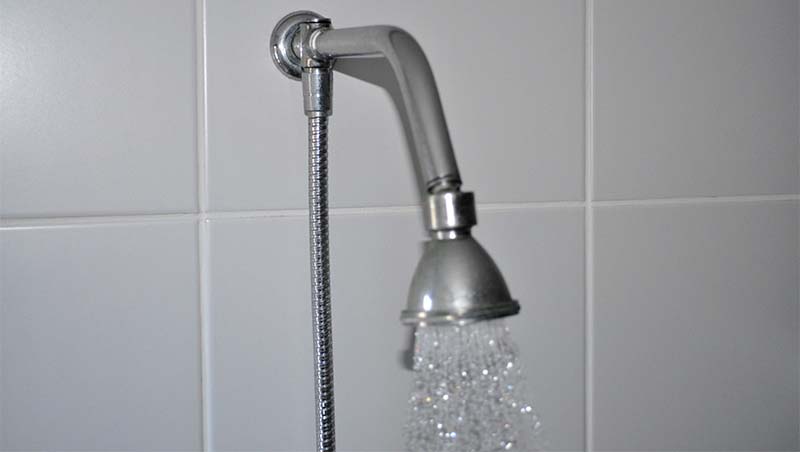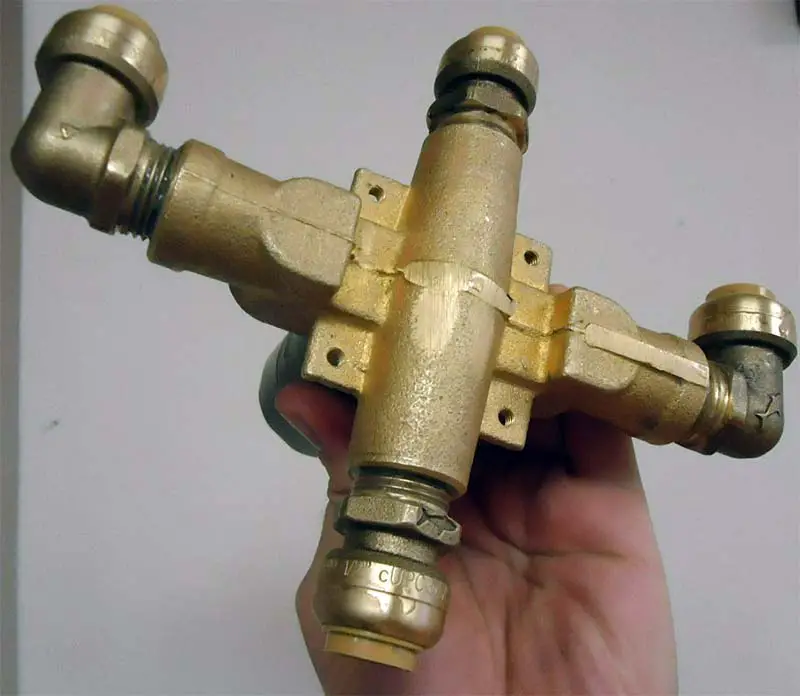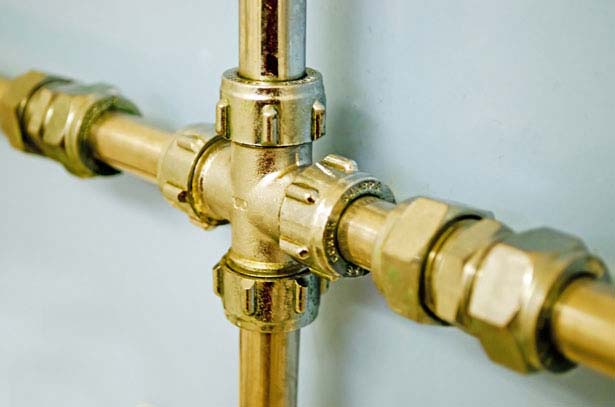Placing a shower head and valve on different walls is viable as long as they’re convenient to use. Another concern when moving shower head and valve to opposite wall is efficiency and safety factors that a professional plumber should consider. To effect these concerns, a good plumber should install the shower head three feet from the valve.
Installing the shower head and valve on different walls is okay if you don’t get wet accessing the valve. Although, it’s recommended that a shower head and valve should go on the same division for easy access and usability.
However, if push comes to shove, having them on different walls still works perfectly.

How to install a shower head and valve
Cold and hot water comes from different pipes, but mixes up in the mixing valve. Water comes out through the tub, shower, or head. Hence, depending on your kit, here’s a standard procedure to install a shower head and valve yourself. Note that the process might vary depending on the model.
Remove the old shower head –
Remove the old shower head using an adjustable one by covering the connecting nut with a dry cloth and then screwing clockwise. Covering it with a fabric prevents the shower arm from getting scratched. If the shower head is rusty, use silicone spray or rust remover, then unscrew it after some minutes.
Clean the shower arm –
Once the shower head comes off, clean the shower arm thread using silicone spray or rust remover. After applying any of these products, chill for some minutes, use a hard-bristle brush to clean the line, and then use a dry cloth to clean off the gunk.
Once the shower arm is clear of rust, use Teflon tape to wrap it counterclockwise so that it comes off the thread when screwing the shower head.
Install the shower head –
Now screw the shower head to the arm, applying a lot of pressure to ensure it goes right.
Ensure no water leaks –
Applying enough pressure when screwing in the shower head ensures that water doesn’t leak. To confirm this, turn on the water and find out. If there are leaks, unscrew the head, apply more Teflon tape and then pressure when fixing it back.

Install the valve –
Depending on where you want to improve your valve, you must also determine which side goes up, down, to the left, or right. You can find these directions on the valve. Mount the mixing valve, so that the face is uniform with the shower or tub wall.
Fix the pipes by screwing following the original setup and ensure the mixing valve installs appropriately. Also, screw on the two water joints for hot and cold water.
Distance between shower head and valve
The distance between a shower head and the valve varies depending on the tub or shower unit. For a shower head at 80″, the ideal height is about 45″ from the ground.
You can simplify everything halfway between the floor and the shower head. In this scenario, it’s 40″ between the two. However, the rules change for a tub-shower unit, and you can measure the height from the shower head to the valve.
Do shower heads come with valves

Not all shower heads come with valves. However, the shower trim and valve must come from the same manufacturer because they operate in tandem.
Hence, buying them from different manufacturers can cause system malfunction. This brings us to the question, are shower valves interchangeable? No. Shower valves aren’t interchangeable because each brand is unique, and you can’t mix and match them.
If you’re replacing shower valve behind the wall, you’ll not find it in the replacement kit as it concerns “Rough Plumbing” within your wall. However, you might need to hire a licensed plumber, as the process is more technical for an unskilled person.
If you worry about the cost to move the shower head to opposite wall, it may range from $820 to $997. The quotation might vary depending on who makes it, job size, and conditions.
How far can shower head be from valve?

The shower head can be 24 inches from the valve to allow water to flow to the head to have enough pressure. Proper fitting of bathroom accessories ensures that anyone (tall or short) using the bathroom doesn’t struggle.
For this reason, the shower head should be 72 inches from the ground while the valve is at 48 inches. Wrong bathroom fixtures can make using the area Uncomfortable.
A shower head and valve connection should be directed to ensure an uninterrupted water flow in the shower. If the distance between the two is too big, you need more piping, meaning it should be small.
The shower head should be about two to four feet above the valve. Measure the distance above the valve, not below, to get the exact pile length.
Frequently Asked Questions (FAQs)
Where should shower controls be placed
Shower controls should be placed 48-52 inches from the bathroom floor to make them accessible inside and outside the shower. Shower heads go 69-72 inches above the bathroom floor, bearing in mind that it extends up to 4 feet from the wall.
Does shower head have to be centered?
Placing your shower head at the center of your wall ensures that water flow is directed to you, not the entire bathroom. Not centering your shower head makes it spray water in opposite directions, resulting in inconsistent pressure when showering. However, there might be exceptions for smaller shower heads that point down to the floor.
What height should a shower valve and spout be set at?
Set the shower valve and spout at 30-50 inches from the bathroom floor. The valve can be a few inches from above the tub or direct for a tub shower unit as part of the faucet.
Final Verdict
The shower head and valve on different walls are doable as long as they’re accessible and usable without straining. Proper placement of shower controls is vital because it makes the shower experience comfortable and enjoyable.
If you’re replacing an old shower head and valve, it’s an easy hack. However, it may be better to hire a licensed plumber for a new installation. This is because they know how to work with all technical aspects and deliver an operational shower.
Also, read – Is 1.8 GPM Good for a Shower Head?
